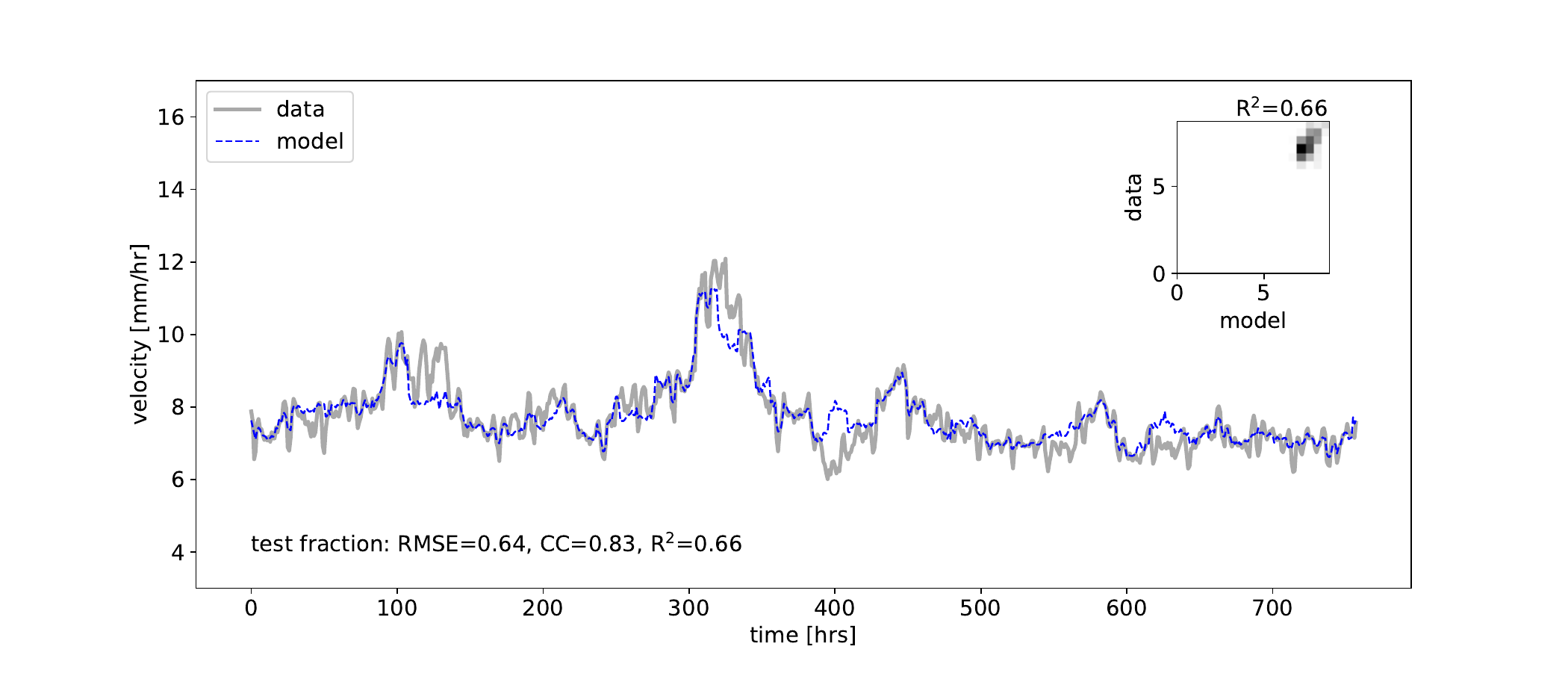Mapping Glacier Basal Sliding with Machine Learning
Title: Mapping Glacier Basal Sliding with Machine Learning
Research Area: Earth & Environmental Sciences

During the RESOLVE project („High-resolution imaging in subsurface geophysics: development of a multi-instrument platform for interdisciplinary research“), continuous surface displacement and seismic array observations were obtained on Glacier d’Argentière in the French Alps for 35 days in May 2018. The data set is used to perform a detailed study of targeted processes within the highly dynamic cryospheric environment. In particular, the physical processes controlling glacial basal motion are poorly understood and remain challenging to observe directly. Especially in the Alpine region for temperate based glaciers where the ice rapidly responds to changing climatic conditions and thus, processes are strongly intermittent in time and heterogeneous in space.
Spatially dense seismic and GPS measurements are analyzed applying machine learning to gain insight into the processes controlling glacial motions of Glacier d’Argentière. Using multiple bandpass-filtered copies of the continuous seismic waveforms, we compute energy-based features, develop a matched field beamforming catalogue and include meteorological observations. Features describing the data are analyzed with a gradient boosting decision tree model to directly estimate the GPS displacements from the seismic noise.
We posit that features of the seismic noise provide direct access to the dominant parameters that drive displacement on the highly variable and unsteady surface of the glacier. The machine learning model infers daily fluctuations and longer term trends. The results show on-ice displacement rates are strongly modulated by activity at the base of the glacier. The techniques presented provide a new approach to study glacial basal sliding and discover its full complexity.
- Seismic and Global Positioning System (GPS) data are examined to study physical processes controlling glacial basal motion
- Decision tree model uses beamforming catalog and statistical features of time series to constrain correlations with GPS recorded motions
- Model features indicate glacial on-ice velocity is modulated by basal motions

Aims
With the aim to uncover the signals related to sliding that are not directly observable, we applied a decision tree model to a new data set from a dense on-ice network on Glacier d’Argentière (French Alps) comprising continuous measurements of local seismicity, surface velocities, and meteorological observations.
Due to the highly variable and noisy glacial environment, extensive preprocessing of the seismic and geodetic measurements is essential for a robust feature space with the goal of directly estimating glacier sliding behavior from the surface of the ice and hence, to monitor its dynamics.
Problem
- The data is characterized by an extremely high noise level, which often buries the signals of interest, such as basal stick-slip icequakes.
- Glacial processes are very dynamic in space and time varying in scale and intensity. For most of these processes the seismic signature (fingerprint) is not yet identified and hence, their behaviour and evolution, are not yet fully understood.
For those reasons, detection and further analysis of process-related signals is extremely challenging.
Technology
Gradient tree boosting is a widely used and scalable supervised machine learning approach. It is a very powerful tool that is based on, but usually outperforms, decision tree ensembles. Decision tree ensembles use multiple shallow trees that can be built in a serial manner, in parallel or even independently from each other and combined in a next step in order to enhance model performance. The ensemble learner can be used for classification or regression problems.
In order to predict a target variable (label), a model is trained based on simple decision rules learned from the data (feature). Depending on the purity of the individual leaves of the tree, the prediction is weighted through a comparison with the respective label. The deviation is represented by an arbitrary loss function. The model is trained sequentially by adding a gradient term to the current decision tree model iteration, with the aim to minimize the loss function for the weighted ensemble of all previous decision trees. Usually, trees that are added in each iteration are shallow (weak learners), but the full ensemble contains a large number of them in total quantity.
Once the model is trained, the feature importance and SHAP values can be evaluated to provide insight into the model predictions, thus allowing one to learn which input observations yield the best estimates on the output label. The SHAP values provide an independent assessment of the contribution for each feature as they sum to total the prediction value.
Outlook
Based on the lessons learned during the RESOLVE project, we continue fundamental research in Cryoseismology using large DAS (distributed acoustic sensing) data sets which provide increased spatio-temporal sampling of the glacier. We use novel ML techniques for Icequake Denoising and Clustering.
Publications
Team
Lead
- Dr. Josefine Umlauft
Partners



